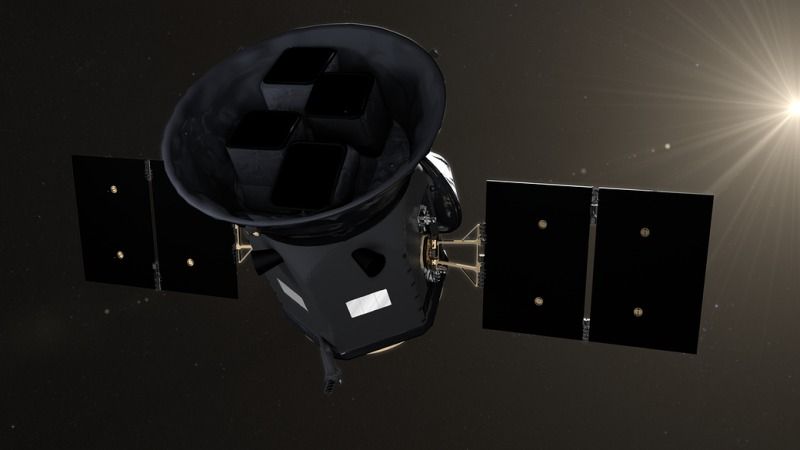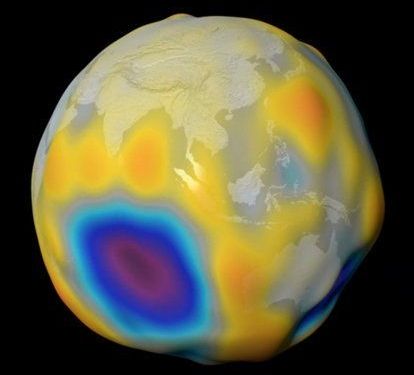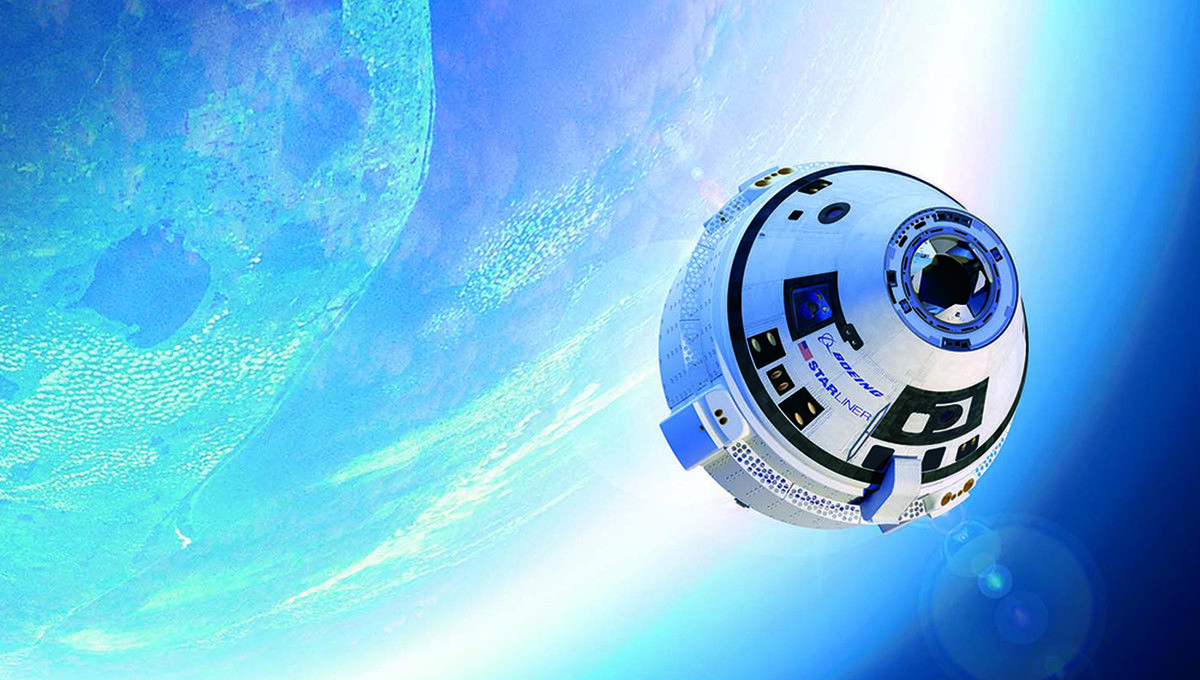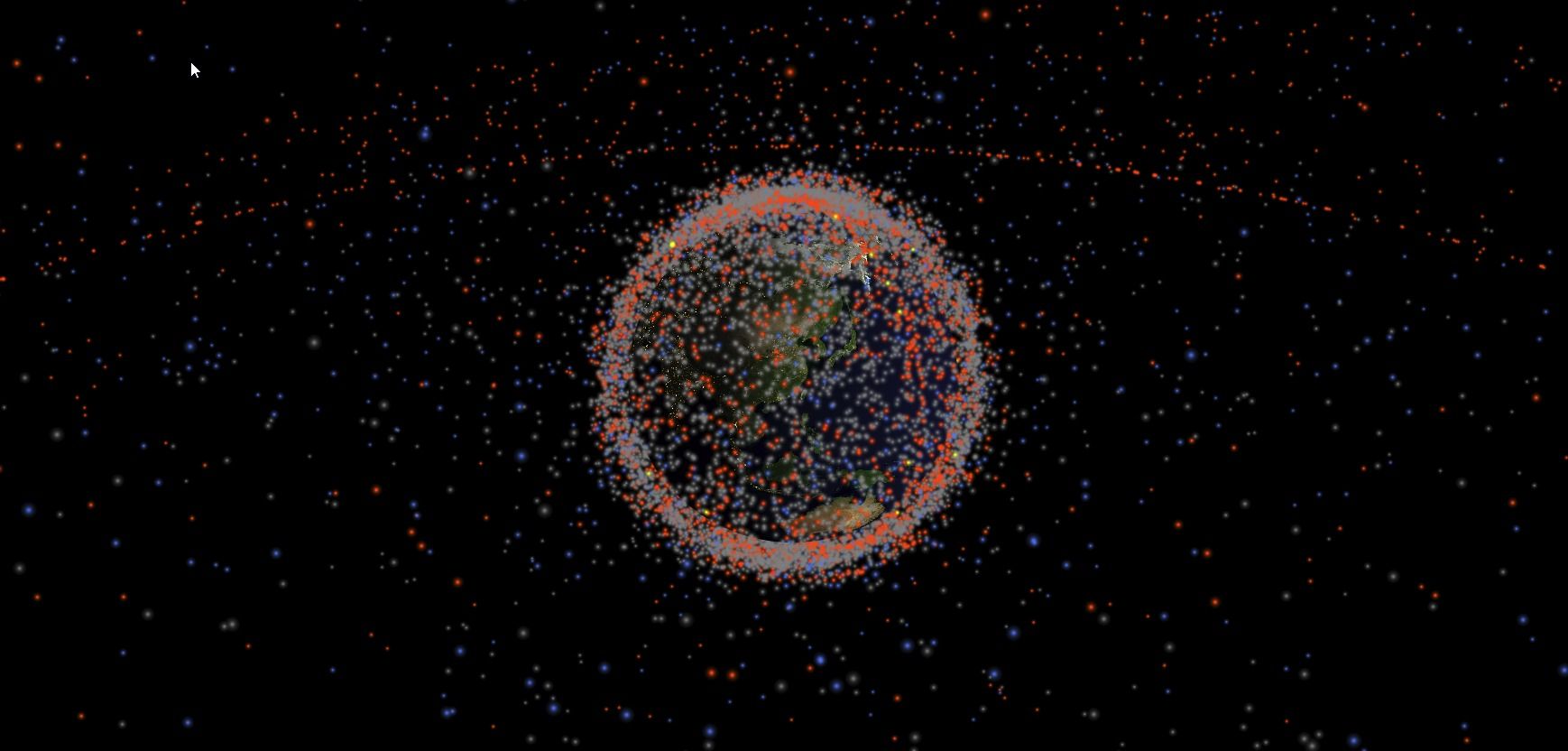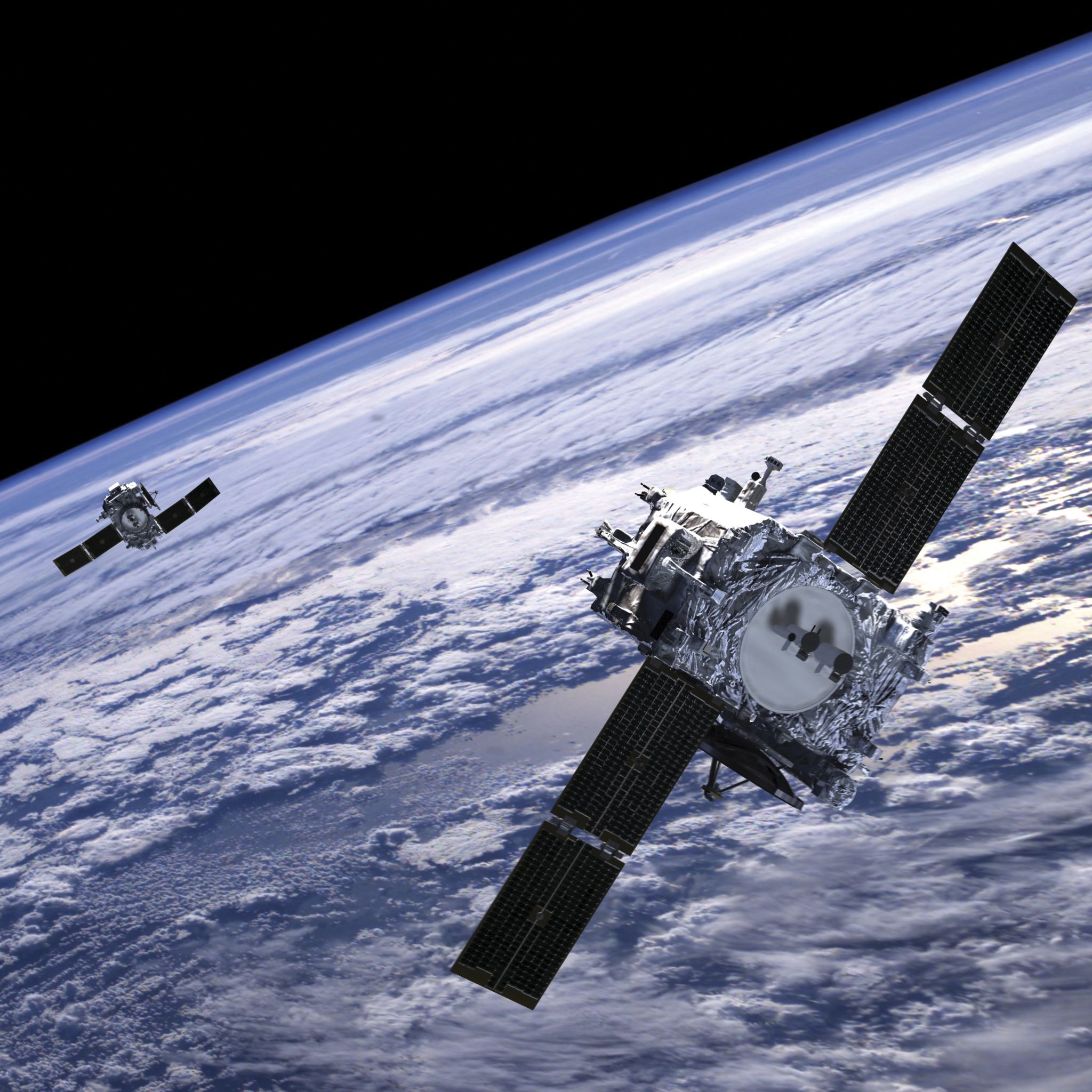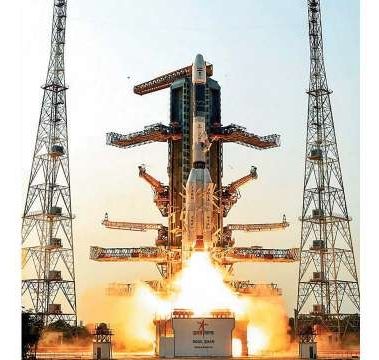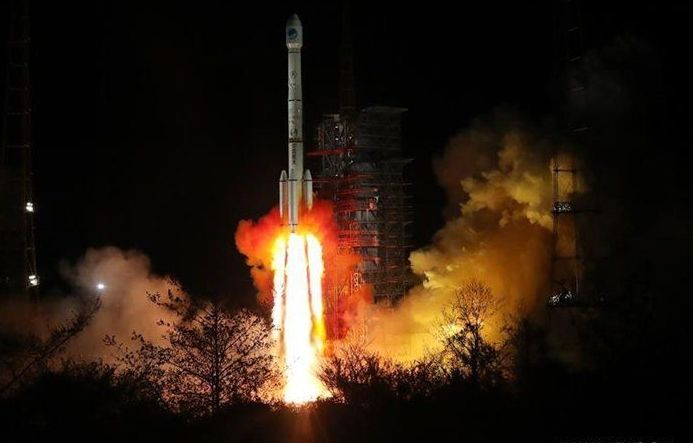Archive for the ‘satellites’ category: Page 163
Apr 11, 2018
Environmental Group Plans Methane-Tracking Satellite
Posted by Genevieve Klien in category: satellites
Tracking methane in the air is hard because it rises and spreads from the source. Measurements taken on the ground and from planes vary all over the place.
Hamburg says the satellite, called MethaneSAT, is the best thing yet for quantifying and tracking the gas: “It will be able to see where it’s happening [and] how much, across the globe — not just the big sources, but all the sources collectively, and understand the scale of the problem. That’s the kind of data we don’t have anywhere in the world.”
The satellite will be about the size of a beer keg and is due for launch in three years. It’s funded with money raised from wealthy philanthropists.
Continue reading “Environmental Group Plans Methane-Tracking Satellite” »
Apr 10, 2018
The ESA Just Discovered a Second Magnetic Field Surrounding Our Planet
Posted by Genevieve Klien in categories: mapping, satellites, sustainability
A trio of satellites studying our planet’s magnetic field have shown details of the steady swell of a magnetic field produced by the ocean’s tides.
Four years of data collected by the European Space Agency’s (ESA) Swarm mission have contributed to the mapping of this ‘other’ magnetic field, one that could help us build better models around global warming.
Physicist Nils Olsen from the Technical University of Denmark presented the surprising results at this year’s European Geosciences Union meeting in Vienna, explaining how his team of researchers managed to detail such a faint signature.
Continue reading “The ESA Just Discovered a Second Magnetic Field Surrounding Our Planet” »
Apr 10, 2018
Humans are going to infinity and beyond (or at least the moon) with Boeing’s Starliner
Posted by Genevieve Klien in categories: existential risks, robotics/AI, satellites
NASA wants to go to Mars. SpaceX wants to go to Mars. Michio Kaku wants humanity to go to Mars so we can avoid extinction. The rest of us just want to see our species actually set foot on Mars. But first, the moon.
Think of the moon as a launchpad for the Red Planet. As LiveScience found out, Boeing’s Crew Space Transportation (CST)-100 Starliner is going to take advantage of our satellite as a blast-off point for the next frontier. Starliner (the name is about as sci-fi as you can get) is what happens when Boeing, which probably makes everyone think airplanes not spaceships, joins forces with NASA to develop a reusable space capsule that will be able to fly up to seven astronauts to the ISS. It will also be the world’s first commercial space vehicle.
Starliner is even autonomous. Meaning crews will spend less time on training and take off sooner. It only needs one astronaut to fly it, or more like assist it in flight, using tablets and touch screens.
Apr 10, 2018
This is the COOLEST! Everything that’s Orbiting the Earth Right Now
Posted by Genevieve Klien in categories: computing, engineering, satellites
Okay, if you’ve got some spare time, check out this amazing website called Stuff in Space. It’s a simulation of every satellite (alive or dead), space station, and large piece of space junk orbiting the Earth right now.
You can zoom in and out, rotate the Earth and its satellites around. Pick any one object and discover more information about it. Or just leave it running and watch all the objects buzz around in real time. Humans have been busy launching a lot of stuff, and it’s only going to increase.
The simulation was made by James Yoder, an incoming Electrical and Computer Engineering freshman at the University of Texas at Austin, and it’s based on data supplied by Space Track, which is a service of the Joint Space Operations Center. They have a bunch of handy data feeds and APIs that you can use track orbital objects, but I’ve never seen anything as creative as this.
Continue reading “This is the COOLEST! Everything that’s Orbiting the Earth Right Now” »
Apr 4, 2018
Rocket Lab sets date for first commercial launch of its Electron rocket
Posted by Genevieve Klien in category: satellites
US spaceflight startup Rocket Lab is officially open for business and has scheduled its very first commercial launch for later this month. The company will launch its small Electron rocket with payloads from two paying satellite operators on board — just three months after completing a second test flight of the vehicle. The upcoming mission will initiate the beginning of customer operations for Rocket Lab, which claims to have a busy manifest for this year and next.
After four years of developing the Electron, Rocket Lab flew the vehicle for the first time in May 2017 out of the company’s own private launch site in New Zealand. That test flight — appropriately dubbed “It’s a Test” — made it to space, though the rocket didn’t achieve orbit, due to a glitch in communication equipment on the ground. Rocket Lab was able to fix the problem, though, and performed a second test flight of the Electron in January in a mission called “Still Testing.” That time, the vehicle did make it to orbit and even deployed four satellites, including a secret disco ball probe made by Rocket Lab’s CEO Peter Beck.
Apr 2, 2018
Expedition Crew Waits for Dragon and Studies Life Science
Posted by Genevieve Klien in categories: biotech/medical, health, information science, satellites, science
The Falcon 9 rocket carrying the SpaceX Dragon cargo craft stands atop its launch pad counting down to a 4:30 p.m. EDT liftoff today to the International Space Station. The Expedition 55 crew is preparing for its arrival on Wednesday while continuing a variety of advanced space research aboard the orbital lab today.
NASA’s Kennedy Space Center in Florida is hosting the 14th launch of a SpaceX commercial cargo mission to the space station. Astronauts Norishige Kanai and Scott Tingle are practicing the maneuvers and procedures necessary to capture Dragon with 2 Canadarm2 when it arrives at 7 a.m. Wednesday morning. Their fellow flight engineers Drew Feustel and Ricky Arnold joined them later in the afternoon to review the cargo they’ll transfer back and forth after they open the hatches to Dragon.
Feustel spent the better part of his day testing algorithms on a pair of tiny internal satellites that could be used to detect spacecraft positions and velocities. Arnold strapped himself into an exercise cycle for an exertion in space study then collected his blood samples for stowage and later analysis.
Continue reading “Expedition Crew Waits for Dragon and Studies Life Science” »
Apr 2, 2018
China’s Space Station Wasn’t the End. Three More Satellites Expected to Crash to Earth This Week
Posted by Genevieve Klien in categories: alien life, habitats, satellites
Tiangong 1, China’s fallen space station, is now in pieces somewhere on the floor of the Pacific Ocean, but it’s hardly the last spacecraft that will plunge to earth. In fact, by the end of the week, three more are expected to re-enter the atmosphere.
Two pieces of space junk from Kazakhstan and one from India are headed home, part of the surprisingly regular amount of cosmic debris that falls to earth each year. The first could occur as early as tomorrow evening, according to Satview.org.
PSLV R/B, an Indian spacecraft that was launched Nov. 4, 2013, is expected to reenter the atmosphere at approximately 6:30 p.m. ET Tuesday. That will be followed Wednesday at 7:30 p, m, ET by FLOCK 2E-3, a Kazakh spacecraft that has been orbiting earth since Nov. 19, 1998. Finally, Friday morning at approximately 10:24 a.m. ET, FLOCK 2E’-6, another Kazakh orbital will fall to earth.
Mar 29, 2018
GSLV mission is successful as GSAT-6A satellite put into orbit
Posted by Genevieve Klien in category: satellites
The Indian Space Research Organisation (ISRO) on Thursday successfully launched communication satellite GSAT-6A on board a Geosynchronous Satellite Launch Vehicle (GSLV) F08 and placed it in the designated orbit.
GSLV F08, fitted with an indigenously developed cryogenic third stage, carrying 2140 kg GSAT-6A, lifted off from the second launch pad at Satish Dhawan Space Centre (SDSC) at 4.56 pm and about 17 minutes later, three-stage rocket injected the satellite into a geosynchronous orbit.
ISRO scientists broke into celebrations at the mission control centre after the satellite was placed in the precise orbit.
Mar 29, 2018
China sends twin BeiDou-3 navigation satellites into space
Posted by Genevieve Klien in category: satellites
China on Friday sent twin satellites into space with a single carrier rocket, adding two more members for its domestic BeiDou Navigation Satellite System (BDS).
The Long March-3B carrier rocket lifted off from Xichang Satellite Launch Center in southwest China’s Sichuan Province at 1:56 a.m. The launch was the 269th mission for the Long March rocket family.
The twin satellites are coded as the 30th and 31st satellites in the BDS.
